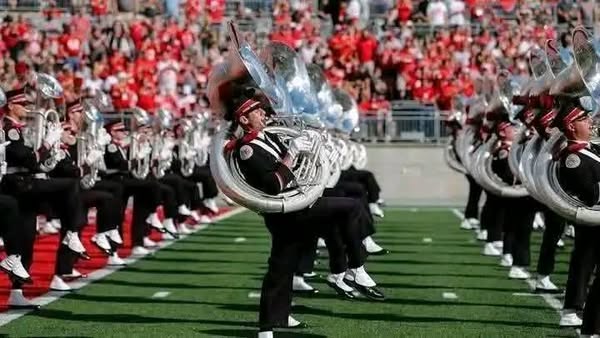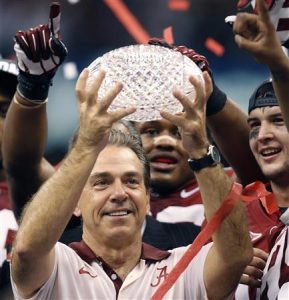
In a monumental decision that blends tradition, spectacle, and American pageantry with the world’s most celebrated sporting event, FIFA has announced that The Ohio State University Marching Band (TBDBITL) will headline the 2026 FIFA World Cup Final halftime show. Set to take place on July 19, 2026, at MetLife Stadium in East Rutherford, New Jersey, the move marks the first time in history a college marching band will perform at the World Cup Final—and fittingly, it coincides with the first time the event is hosted on American soil since 1994.
With more than a billion global viewers expected to tune in, the selection of TBDBITL signals an ambitious and culturally significant pivot. FIFA’s decision reflects a desire to honor American musical traditions while also adhering to strict global broadcasting standards and security protocols that accompany the world’s most-watched sporting event.
A Surprise Selection for a Global Stage
For more than a century, the Ohio State Marching Band has been renowned as “The Best Damn Band in the Land.” Their intricate dotting of the “i” in Script Ohio, spellbinding drill formations, and unmatched musical precision have earned them accolades from presidents, celebrities, and millions of fans. But this World Cup appearance elevates their status to global cultural ambassadors.
Sources close to the FIFA Entertainment Committee revealed that several options were discussed, including internationally famous pop acts, orchestras, and even collaborations with AI-generated performances. However, the committee was swayed by the sheer uniqueness and theatrical brilliance of TBDBITL’s style. Their ability to blend military precision with mass entertainment was cited as a major factor in the selection.
“The Ohio State Marching Band represents a unique American art form that is both visually stunning and emotionally resonant,” said Elisa Venturelli, FIFA’s Senior Director of Cultural Affairs. “As we bring the World Cup Final to the United States for the first time in a generation, we wanted to make a bold and memorable statement that connects the global community to American cultural heritage.”
Under Strict Conditions: Navigating FIFA’s Rigorous Framework
Despite the honor, the band’s inclusion comes under strict conditions and heavy scrutiny. Unlike the NFL Super Bowl, which allows near-total creative control for halftime acts, FIFA imposes precise requirements for timing, field access, and international broadcast coordination. The TBDBITL’s performance has been limited to eight minutes, including setup and exit—a challenging feat for a band known for elaborate 15–20 minute routines.
In addition, the band had to agree to several stipulations, including:
- Uniformity in instrumentation: Only acoustic brass and percussion instruments allowed—no amplification or electronics.
- No use of nationalistic symbols beyond their uniforms—so as not to appear biased during a neutral global event.
- Choreography subject to FIFA approval, with extensive pre-performance rehearsals scheduled in MetLife weeks prior.
- Full adherence to multilingual broadcast guidelines, including the band’s song choices being vetted for cultural appropriateness across 200+ countries.
Despite these hurdles, Dr. Christopher Hoch, director of the OSU Marching Band, expressed both humility and excitement:
“To be invited to perform on the world’s largest stage is both an honor and a responsibility. We’re working closely with FIFA and U.S. Soccer to ensure that our performance is both respectful to the international audience and emblematic of our tradition.”
Planning the Show: Tradition Meets Global Appeal
Though details of the performance remain under wraps, insiders hint that TBDBITL is preparing a never-before-seen visual tribute to the global game of football (soccer) while still incorporating core aspects of Script Ohio-style formations.
One rumored element includes massive field-wide depictions of iconic global landmarks, such as the Eiffel Tower, Christ the Redeemer, and the Pyramids of Giza, performed via precision marching and live music arrangements of international anthems.
Additionally, the band is expected to collaborate with a yet-unnamed Grammy-winning guest artist, likely to appeal to younger audiences and enhance the global broadcast appeal. Whether this artist performs live with the band or contributes via pre-recorded vocals remains unclear.
“The challenge is to create something visually compelling for a live audience of 80,000 and a TV audience of more than a billion,” said Rachel Linhart, a lead producer for the halftime show. “We believe the Ohio State band can deliver something utterly unforgettable.”
Rehearsals and Logistics: Months in the Making
Preparation for the performance began in early 2025, with multiple creative sessions between TBDBITL staff, international choreographers, and FIFA event planners. While OSU has performed at NFL stadiums and parades such as the Rose Bowl and Macy’s Thanksgiving Day Parade, nothing matches the scale and pressure of the World Cup Final.
Security measures will also be the most intense in the band’s history. All 228 band members, equipment managers, and support staff will undergo FBI background checks, biometric security screening, and must operate under restricted movement protocols while in the MetLife compound.
In April 2026, the band will temporarily relocate to the New York metro area for a two-week closed rehearsal residency, with housing provided in collaboration with U.S. Soccer. The band’s instruments and uniforms will be transported under armed federal escort, and additional rehearsals will be conducted in total privacy inside a restricted-access stadium in New Jersey.
Global Reaction: Curiosity, Pride, and Criticism
The reaction to the announcement has been mixed—but overwhelmingly curious. American fans celebrated the decision as a bold cultural expression and a nod to collegiate excellence. In Columbus, spontaneous rallies broke out around the OSU Oval after the news was confirmed.
“This is like winning a Nobel Prize in showmanship,” tweeted former Ohio State quarterback C.J. Stroud, now with the Houston Texans. “TBDBITL deserves this moment.”
Globally, reaction has been more cautious. Some critics question whether a university marching band can truly resonate with an international football crowd used to mega-concert halftime productions.
“Why not Shakira, or BTS, or Coldplay?” one Argentine commentator questioned on ESPN Latin America. “Will a brass band really hold the world’s attention?”
But supporters argue that breaking the mold is exactly what the World Cup in the U.S. needs. Cultural analyst Juliette Moreau said, “When you think of what makes America musically unique, you think of jazz, hip-hop—and yes, the pageantry of the marching band. This is a way to celebrate that without needing to outdo a pop concert.”
Ohio State’s Legacy Elevated
This performance will not only spotlight the Ohio State Marching Band—it will also cement the university’s place in global cultural history. Already known for its innovations in music education and marching technique, Ohio State will now have the distinction of being the first academic institution to provide musical entertainment at a World Cup Final.
University President Dr. Kristina M. Johnson released a statement calling the opportunity a “profound moment of pride for Buckeyes everywhere.”
“Ohio State has always believed in dreaming big,” Johnson wrote. “This invitation is a testament to the excellence of our students, faculty, and the spirit of American creativity.”
The Ripple Effect: New Opportunities for Marching Bands
Industry experts believe this move could usher in a new era of visibility for collegiate marching bands, which traditionally receive little international attention. With the performance airing live in more than 180 countries, other schools and organizations may soon be seen as cultural emissaries, capable of representing America through more than sports or pop music.
The College Band Directors National Association (CBDNA) released a statement praising FIFA’s decision and expressing hope that more global events will consider the rich storytelling power of marching music.
“This isn’t just a win for Ohio State,” said CBDNA president Dr. Alex Martinez. “This is a win for every young musician in America who dreams of showing the world what we can do.”
Countdown to History
As the 2026 World Cup draws near, all eyes will eventually turn to MetLife Stadium—not just for the final match between the world’s two best football nations, but also for a halftime show that promises to defy expectations.
Whether skeptics or supporters, one thing is certain: the Ohio State Marching Band is preparing to make history under the brightest lights imaginable.
And come July 19, 2026, when the world pauses for halftime, millions will witness not just a performance—but a moment of national pride, orchestrated by a band that’s long proven its motto.





